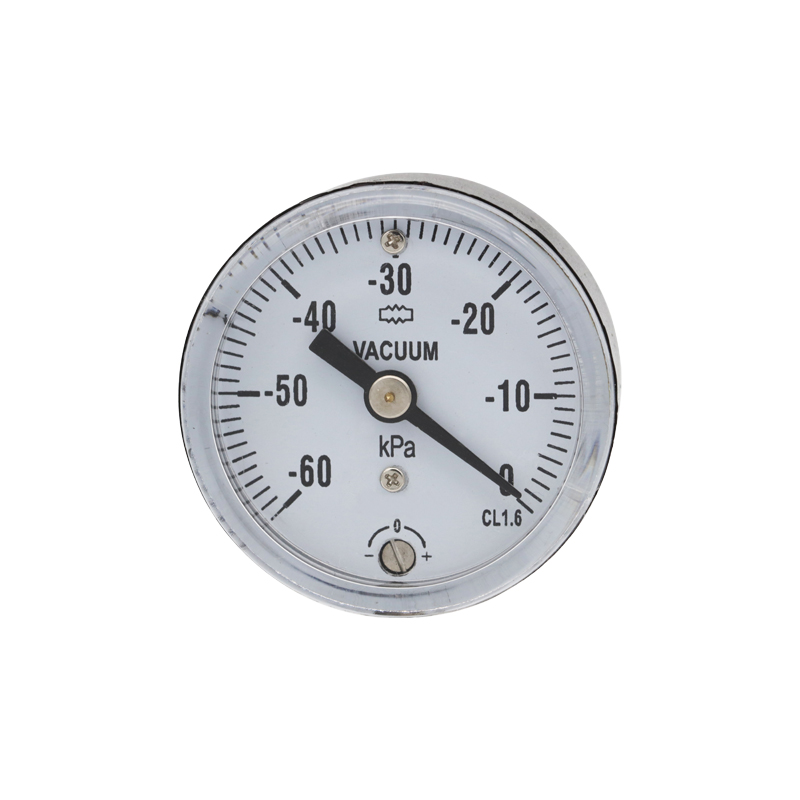
Nov . 27, 2024 17:38 Back to list
High Pressure Differential Pressure Gauge Manufacturers and Their Innovative Technologies
Understanding High-Pressure Differential Pressure Gauges An Overview of Their Manufacturing and Applications
High-pressure differential pressure gauges are vital instruments used in various industrial applications to measure the pressure difference between two points. These gauges play a crucial role in ensuring operational efficiency, safety, and performance in processes involving gases and liquids. This article explores the manufacturing of high-pressure differential pressure gauges and highlights their importance in several industries.
What is a Differential Pressure Gauge?
A differential pressure gauge measures the difference in pressure between two input points. It is commonly used to monitor the pressure drop across filters, flow meters, and other equipment. The device typically contains a sensing element that responds to changes in pressure and translates these changes into a readable output, often displayed in psi, bar, or Pascal. High-pressure differential pressure gauges are specifically designed to function effectively in environments where pressures exceed standard levels.
Manufacturing of High-Pressure Differential Pressure Gauges
The manufacturing process of high-pressure differential pressure gauges involves several critical steps that ensure accuracy, durability, and safety.
1. Material Selection The first step in manufacturing these gauges is selecting high-quality materials that can withstand extreme pressure and various environmental conditions. Common materials include stainless steel, brass, and specialized alloys that resist corrosion and wear.
2. Design and Engineering Engineers design the gauge to meet specific industry standards and customer requirements. This stage involves rigorous calculations and simulations to ensure that the gauge can withstand the maximum expected pressure. Advanced design software is often utilized to create prototypes digitally before physical production begins.
3. Precision Machining The production process entails precision machining of components such as the casing, diaphragm, and connection ports. Utilizing CNC (Computer Numerical Control) technology allows manufacturers to create components with high precision, ensuring the accuracy of the gauge.
4. Assembly After individual components are machined, they are carefully assembled. This stage requires skilled technicians who ensure that each part fits perfectly and that seals are correctly placed to prevent leaks. The assembly process is critical, as any flaw can lead to inaccurate measurements or device failure.
high pressure differential pressure gauge factories

5. Calibration and Testing Once assembled, each high-pressure differential pressure gauge undergoes rigorous calibration and testing. Calibration ensures that the gauge provides accurate readings under various pressure conditions. Testing is conducted to verify the device's performance, reliability, and safety features. This step is vital for meeting industry regulations and standards.
6. Quality Control Finally, the finished gauges undergo a thorough quality control inspection. This process ensures that each product meets the established specifications and quality standards. Any gauge that does not pass inspection is either reworked or discarded.
Applications of High-Pressure Differential Pressure Gauges
High-pressure differential pressure gauges are used in various industries, each requiring precise and reliable pressure measurements
- Oil and Gas In the oil and gas sector, these gauges monitor pressure differences in pipelines and processing equipment, ensuring safe and efficient operations.
- Chemical Processing Chemical plants utilize high-pressure differential pressure gauges to control processes, monitor reactors, and ensure safety in handling volatile substances.
- HVAC Systems In heating, ventilation, and air conditioning systems, these gauges help monitor airflow and pressure drop across filters, ensuring optimal performance and energy efficiency.
- Pharmaceuticals In the pharmaceutical industry, maintaining the correct pressure levels is crucial for safety and compliance with regulatory standards. Differential pressure gauges are integral to this process.
Conclusion
High-pressure differential pressure gauges are indispensable tools across various industries. The rigorous manufacturing process, which emphasizes material selection, precision engineering, and thorough testing, ensures that these gauges function reliably under demanding conditions. As industries continue to evolve, the importance of accurate pressure measurement will only increase, making the production of high-quality differential pressure gauges a critical focus for manufacturers worldwide.
-
High-Precision 5 Valve Manifold Differential Pressure Gauge Suppliers
NewsApr.29,2025
-
High-Precision Diaphragm Vacuum Pressure Gauges Manufacturers & Quotes
NewsApr.29,2025
-
Omega Differential Pressure Gauges High Accuracy & Durability
NewsApr.28,2025
-
Low Pressure Differential Pressure Gauges Precision Solutions & Quotes
NewsApr.28,2025
-
Digital Diaphragm Pressure Gaauge Precision Measurement & OEM Quotes
NewsApr.28,2025
-
Differential Pressure Gauge China Price High-Accuracy & Best Quotes
NewsApr.28,2025
